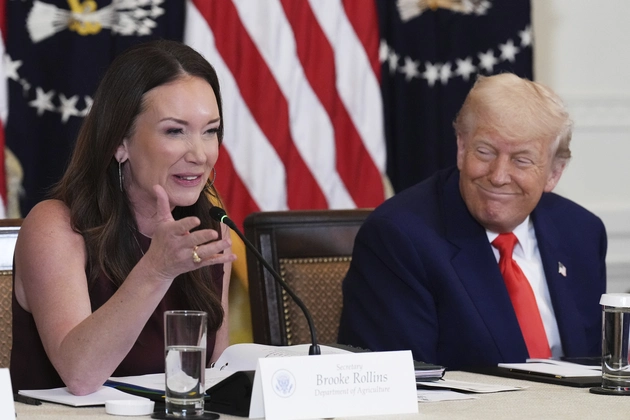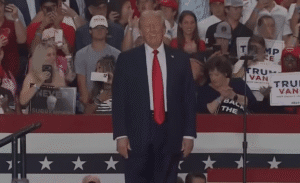Trump Administration Says it Won’t Tap Emergency Funds To Pay Food Aid

The Trump administration has decided not to use emergency funds to cover federal food benefits, putting nearly 42 million Americans at risk of losing aid from the Supplemental Nutrition Assistance Program (SNAP) starting November 1, according to a memo obtained by POLITICO.
The U.S. Department of Agriculture (USDA) confirmed that it will not draw from its $5 billion contingency fund or divert money from other nutrition programs to fund SNAP, the nation’s largest anti-hunger program. Officials said the program needs around $9 billion to cover November’s payments far more than what’s available in reserve.
Even if the administration used part of the contingency funds, USDA officials said it would take weeks to distribute the money on a partial basis, meaning most low-income families would still miss their food benefits for November.
To meet the deadline, federal agencies would have needed to start processing partial payments weeks ago, but no such preparation has taken place.
Tension Between the White House and Democrats
Congressional Democrats and anti-hunger advocates have urged the Trump administration to continue SNAP benefits into November. Some have argued that the federal government is legally obligated to use available funds to keep the program running.
However, senior officials told POLITICO that tapping other federal funds would drain resources meant for future emergencies, such as natural disasters and food assistance for children and mothers.
The White House has blamed Democrats for the looming cutoff, citing their repeated votes against a House-passed stopgap funding bill that would have kept the government funded.
Two administration officials, speaking anonymously, said they expect Democratic governors and advocacy groups to sue the administration over the decision.
USDA Defends Its Decision
According to the USDA memo, first reported by Axios, the contingency fund is meant for emergency situations only, such as hurricanes or natural disasters. The agency also said that diverting money from other programs like the Women, Infants, and Children (WIC) program or the school lunch program would harm millions of other vulnerable Americans.
“This administration will not allow Democrats to jeopardize funding for school meals and infant formula in order to prolong their shutdown,” the memo stated.
Earlier this month, the Trump administration found ways to keep other critical programs afloat, including military pay and farm aid. But USDA officials said SNAP cannot receive similar treatment due to strict funding limits.
Democrats Push Back
Leading Democrats quickly condemned the decision. Rep. Angie Craig (D-Minn.) and Rep. Rosa DeLauro (D-Conn.), who chair key agriculture and appropriations committees, said Congress had already approved billions for SNAP in November.
“It is the Trump administration that is taking food assistance away from 42 million Americans — including hungry seniors, veterans, and families with children,” they said in a joint statement. “This is perhaps the most cruel and unlawful offense yet freezing funding already enacted into law while sending tens of billions of dollars elsewhere.”
Possible Paths Forward
Congress could pass a standalone funding bill to extend SNAP into November, but both the House and Senate would need to act quickly. Lawmakers have only a few days left before the payments stop.
Rep. Don Bacon (R-Neb.) said he supports using the emergency fund to provide temporary relief. “I think the President and GOP should do what we can to alleviate harm done by the Democrats,” Bacon told POLITICO. He also said he would back returning to Washington if the Senate passes a separate SNAP funding bill.
State-Level Responses
Some states, including Virginia and Hawaii, have begun using state emergency funds to continue providing food benefits, but local officials say those resources won’t last long. State budgets depend heavily on federal funding for anti-hunger programs, and USDA has made clear that states will not be reimbursed for any money spent to cover SNAP shortfalls.
For now, millions of Americans face uncertainty as the federal government shutdown drags on. Without immediate action, many households could lose a critical safety net that helps them put food on the table each month.





